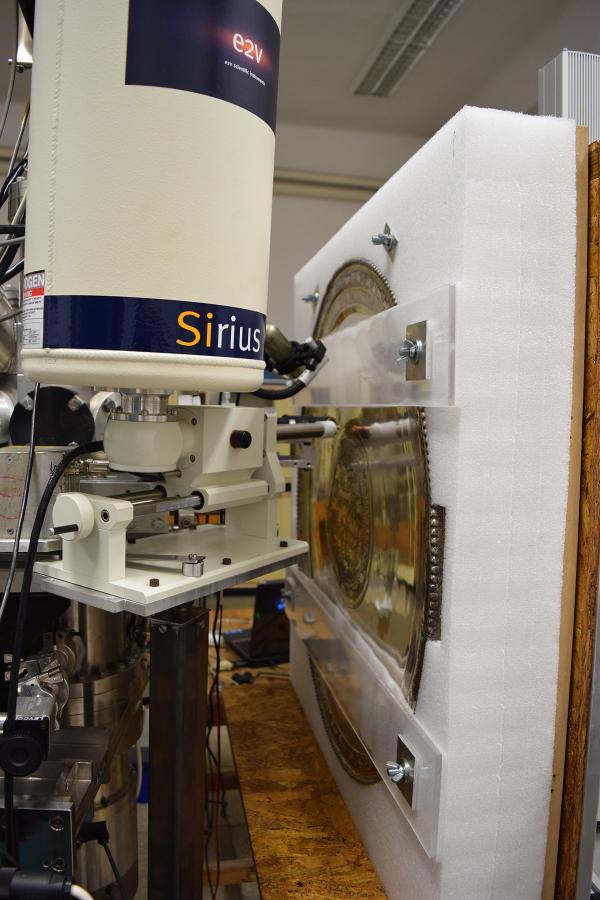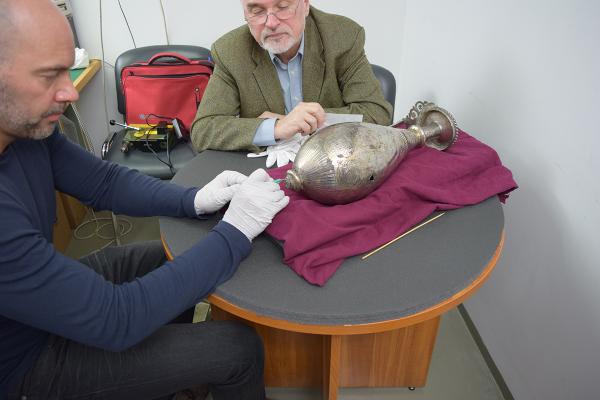Archaeometry
Archaeometry is a science dealing with the natural scientific research of our cultural heritage. For the interpretation of the results, it uses the entire toolkit of modern materials science and the results and methods of related sciences for the sake of studying, processing, conserving and rescuing our cultural heritage. It includes all the chemical, physical, biological, geological and mathematical methods, which assist the examination of different materials, dating and archaeological exploration. Its main objectives are the support of archaeological, art historical, research, data collection about different manufacturing techniques used, determination of origin and authenticity, dating, identification of copies, fakes and forgeries, as well as support of restoration and conservation.
The archaeometric analysis of the Seuso treasure includes two main research fields: the analysis of traces referring to the discovery site of the objects, and the examination of the materials of the objects.
Analysis of the traces referring to the site of discovery
One of the main tasks during analysis of the traces referring to the site of discovery is the characterisation of the soil remains, deposits and corrosion products found on the copper cauldron and the silver vessels. Analysis of the soil at the presumed findspot takes place in parallel with the aim of classifying and characterising the soil in the vicinity of Szabadbattyán and Polgárdi. Comparison of the analytical results of the soil samples on the objects and at the presumed site of discovery can provide important data for defining the precise findspot of the treasure, as well as the relationship of the objects with one another.
Research of the material of the objects
Examination of the objects includes analysis of the metal of the copper cauldron and the silver vessels, and the decoration techniques used (niello inlaysand gilding), as well as the different solders used for assembling the different parts. The analysis extends to drawing parallels with similar contemporaneous finds. The analyses aim at determining the material similarity or difference among the objects and among the parts of one object, determining the provenance of the raw material (ore deposit) used for their manufacture, as well as deduction to the applied manufacturing techniques. A further aim of the analyses is to reveal the parallels of the vessels with the help of materials science features and to reach a conclusion with regard to their location of manufacture. Thus the Archaeometry Sub-project provides materials science support for the other sub-projects, especially for Sub-projects 2 and 4, to resolve the issues concerning workshops and archaeological problems.
Head of the sub-project: Bernadett Bajnóczi, geologist, senior research fellow, Institute of Geological and Geochemical Research, Research Centre for Astronomy and Earth Sciences, head of the Archaeometric Research Group, and István Fórizs, physicist, senior research fellow, Institute of Geological and Geochemical Research, Research Centre for Astronomy and Earth Sciences




